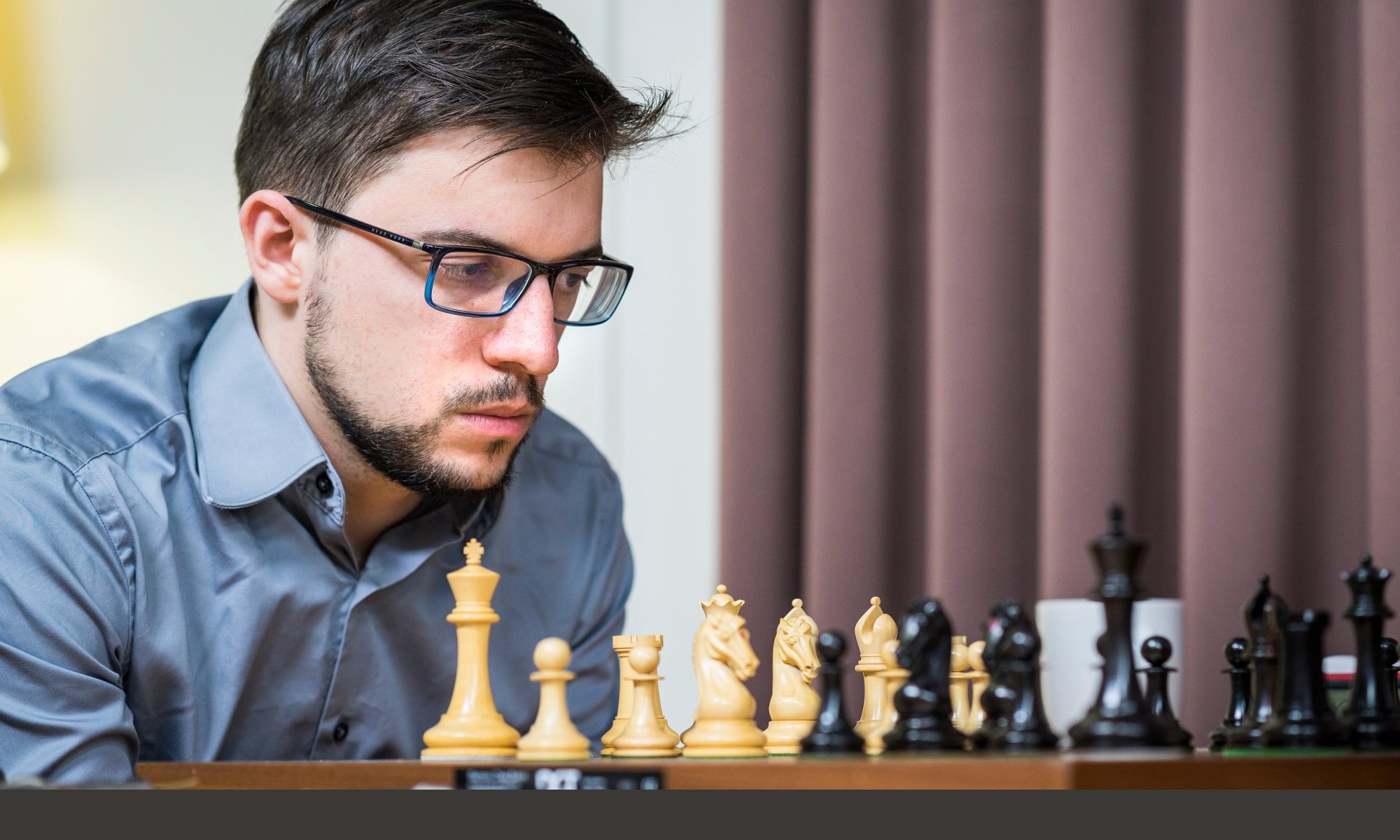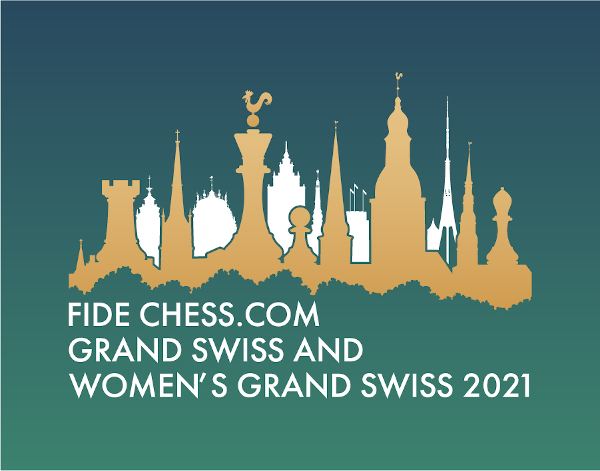I prepared for about two weeks for the Grand Swiss in Riga and the European Championships which followed it, even if this preparation was interrupted by a few games played in the Bundesliga in mid-October with my club Baden-Baden. I was holding board 1 at this gathering in Berlin which came to close the aborted 2019-2020 season 🙂 , and my score of +2 =3 helped to give the team a new national title.
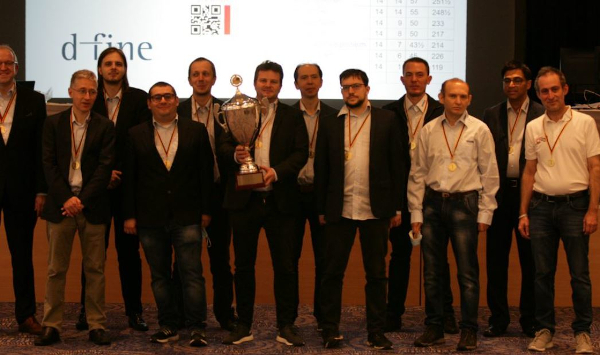
Grand Swiss Riga
I arrived in Latvia on October 25, a few days after the implementation of a lockdown in the country, due to the high number of cases of Coronavirus in the population. This inconvenience, as well as travel difficulties for some, caused a few forfeits among the announced participants of the Grand Swiss. Because of this strict confinement, I could not leave the hotel after 8pm. Since the games were played during the day, I rarely went outside. Basically, I walked to and from the playing hall, and that was about it! Even when I finished early, I would go back to the hotel and head to the gym until 7:30. In this situation, the ability to work out was a must. You couldn’t walk around the city centre, you missed the warmth of mingling with people and having a minimum of contact with the local population.
Fortunately, this obvious lack was counterbalanced by the opening of a lounge in the hotel for the players. This quickly became an essential part of the daily life of the tournament. It was open 24 hours a day 🙂 , which gave rise to convivial scenes, with lively discussions, but also friendly challenges, chess puzzles, blitzs etc. I stayed there until midnight to relax. Of course, I also took the necessary breaks to prepare myself against my opponent of the next day.
Round 1: Niemann-MVL: 0,5-0,5
I started the tournament with a clean draw against the young American GM and world puzzle rush specialist!
Round 2 : MVL-Tabatabaei 1-0
n game 2, against Amin Tabatabaei, we found ourselves playing the Berlin endgame. As against Xiong in the Sinquefield Cup, I took my time to decide which line I would finally play. By the way, it led to almost exactly the same game 🙂 , with a pawn on f6, the knight going to g5, and taking control of the h file.
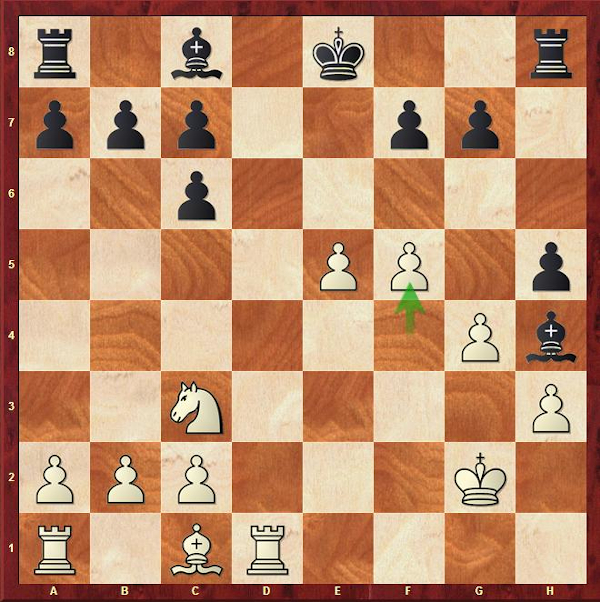
Here, my opponent absolutely had to play 16…g6 (instead of 16…Be7? 17.Kg3, and it’s already lost because Black doesn’t have time to play 17…g6 because of 18.f6 Bb4 19.Ne4 with an overwhelming position), but he must have been afraid of 17.g5 and that the h4 Bishop would be trapped; which never works since if Rd4, Black will always have …Be1.
Round 3: Donchenko-MVL : 0,5-0,5
I had a similar game against Mamedyarov. I made the mistake of not repeating that game which was quickly drawn. Indeed, I wanted to keep some chances. This did not turn out to be a good idea and my opponent took the draw a pawn up, although there was probably a way for him to cause me some more problems.
Round 4: MVL-Demchenko 1-0
I knew that my opponent of the day played a lot of sidelines against the Spanish, and I had looked at them before the game. 13.Bf4 would have been more accurate than the game move (13.Bg5). Nevertheless I got a nice initiative until 18.e6 fxe6 19.dxe6.
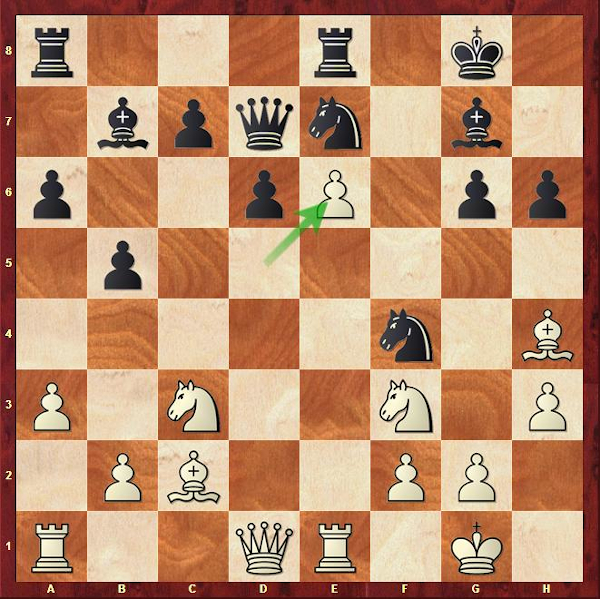
Here, the critical move was 19…Nxe6 20.Ne5 Bxe5 21.Rxe5 and now 21…c5! which we both missed and which would allow a further …Nd4. And then it would not have been clear, contrary to the game, where I took a decisive edge after 19…Qc6? 20.Re4 Ned5 (20…g5 21.Rxf4! gxf4 22.Qd3) 21.Nxd5 Nxd5 22.Rg4!.
Round 5: Firouzja-MVL 0,5-0,5
I was not in trouble in this game against my new compatriot.
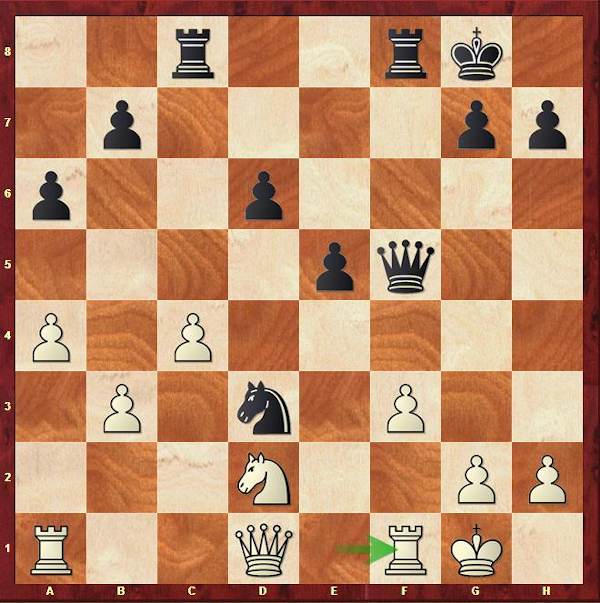
I even tried to take the advantage, but in the wrong way, so that I found myself a little bit worse after 21…Rfd8 22.Ne4 Nf4 23.Ra2 d5 24.cxd5 Rxd5 25.Rd2. I could have played 21…d5! right away, which was better after 22.cxd5 Rfd8 23.Ne4 (23.Nc4 Nf4 24.d6 b5) 23…Rxd5, because my knight remains on d3.
After that, I was very careful in defence, and the position flattened out. Maybe I could have gone on a bit at the end, but I didn’t see a realistic chance of winning. So I decided to leave it at that and concentrate on the rest of the tournament.
Round 6: MVL-Ponkratov 1-0
I played an Advance French variation involving a pawn sacrifice. Despite a low number of total moves, it was a very complicated game, with a lot of content. At the beginning, Black played all the good moves, especially 12…g5!.
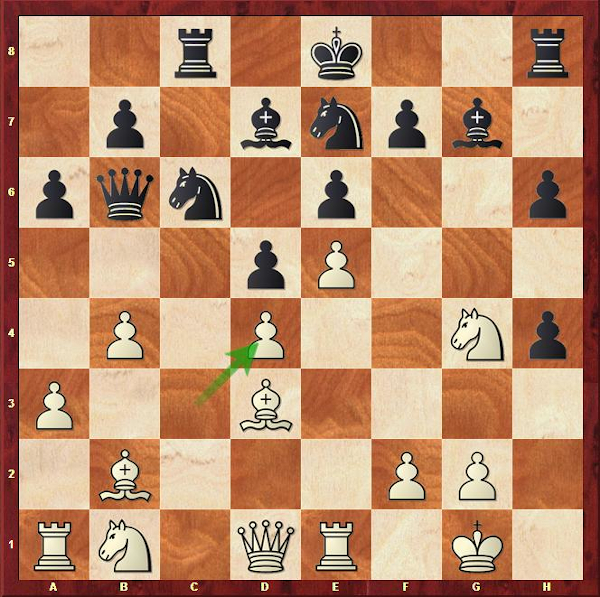
But at move 15, in a position where we were already running low on time, Black made the mistake 15…h5?. I guess my opponent looked at the critical 15…Nxd4, but he must have felt something wrong with it. Pressed by the clock, he finally played this mistake 15…h5? after 20 minutes of thought. 16.Nf6+ Bxf6 16.exf6 Ng8 17.Qf3 Rh6 18.Qxd5 Nxf6 19.Qg5 Ng4 followed.
I was quite clinical afterwards with 21. Nc3! Qd8 (if 21…Qxd4, there is 22.Nd5! Qxf2+ 23.Kh1 and mate to follow) 22.Qxd8+ Kxd8 (Black might have resisted a bit with 22…Rxd8, but the result would probably not have been altered) 23.Ne4 e5 24.f3 Nxd4 25.fxg4 hxg4 26.Ng5 1-0.
So after this first half of the tournament and before the rest day, I had done the job with white, and I had never been in danger with black. I was in the lead ex-aequo.
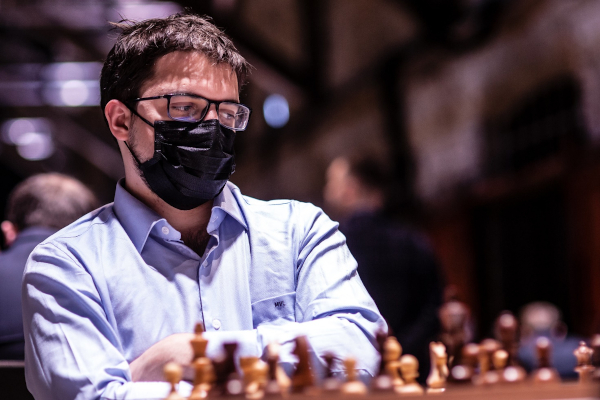
Round 7: Sasikiran-MVL 0,5-0,5
A complicated and theoretical Najdorf! I was forced to repeat the moves at the end. I know that some people reproached me for it, but I don’t regret this decision. I preferred to take the draw because his position was too solid and I couldn’t see how I could create chances for myself; on the other hand, I could see very well how I could create chances for him 🙂 .
Round 8: MVL-Shirov 0,5-0,5
Definitely the turning point of the tournament. I thought a lot before the game to decide what I was going to play against this specific Arkhangelsk line that Shirov likes, but my choice turned out to be a failure. I had in mind that the type of position I got was good for white, but in fact it was not. I could see that after black’s 26th move.
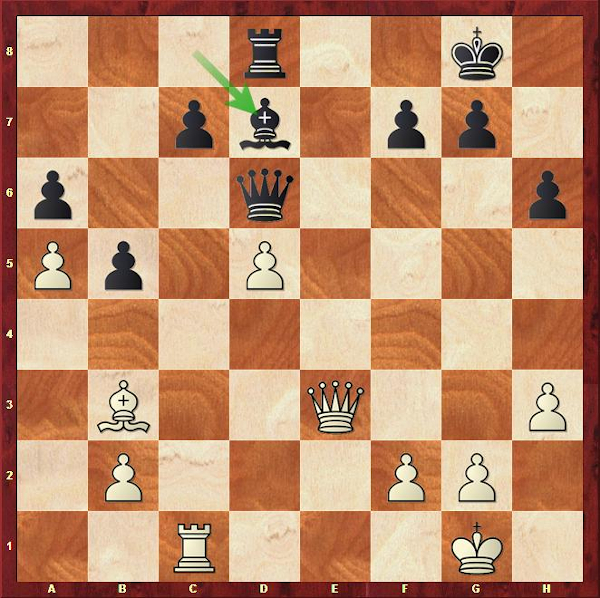
Here, if I play 27.Qc3 or 27.Qa7 to attack the c7-pawn, black has 27…Re8! which is strong, because 28.Qxc7? is met by 28…Re1+.
After 27.Qg3, I expected my opponent to play 27…Rc8 and a draw to be quickly agreed, but he preferred to exchange Queens with 27…Qxg3. This was certainly not the best practical choice ? After some precise play on my part, I managed to create some chances in a pawn ending.
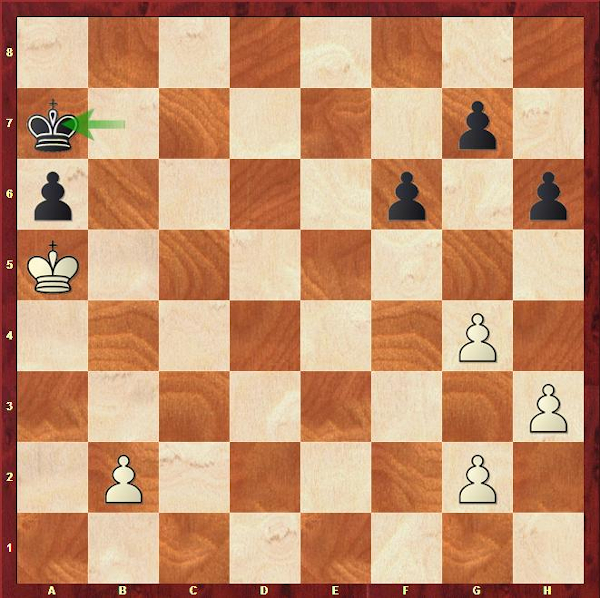
Unfortunately, I made a very big mistake (47.h4?) because, like Shirov, I didn’t realize the potential of this endgame. I feel bad I didn’t just start with 47.Kb4 Kb6 48.Kc4, because Black would have had some incredibly difficult decisions to make to save this endgame, which it would be difficult to analyze here because its apparent simplicity actually conceals a lot of finesses.
Round 9: Anton-MVL 0,5-0,5
A game where my opponent had decided to take his chances, which allowed both of us to have a shot at the initiative. The game had a very rich content: I sacrificed two pawns, but white took risks by returning them to create a long-term attack on my King.
A very interesting game that ended abruptly because I was forced to take the draw by repetition.
Round 10 : MVL-Caruana 0,5-0,5
A decisive game. The threat of a Marshall gambit was unexpected, but I was still able to cause him problems with the anti-Marshall 8.a4. But I made some small miscalculations in this game; even if they turned out to be inconsequential, they proved to be a bit destabilizing for me. For example, before playing 23.Ba5 afew moves earlier, I had forgotten that 26…Qb4! was possible here.
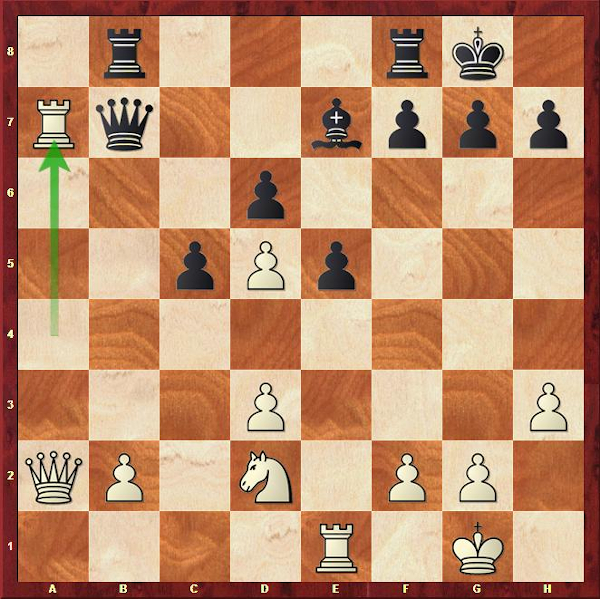
still kept a small advantage afterwards, but Fabiano played very well. 27.Rd1 Rb7 28.Nc4 Rxa7 29.Qxa7 Qb3 30.Re1 Qxd3 31.Qxe7 Qxc4 32.Qxd6 Qd4. My second strategic mistake was obviously 33.Qxe5? as I simply forgot 33…Qxe5 34.Rxe5 f6! which forces a quick draw, as he defended well to prevent the small chances I still had.
That said, if I had played 33.Rxe5, he would probably have replied with 33…Ra8!. With black’s Queen on d4 stronger than her counterpart on d6, I didn’t imagine I had any real chances either in this variation.
Round 11: Yu Yangyi-MVL 0,5-0,5
An all-in game. Besides my opponent, a usual 1.d4 player, chose to play against the Najdorf with 6.h3.
A mutual evaluation error led to the ultimate draw.
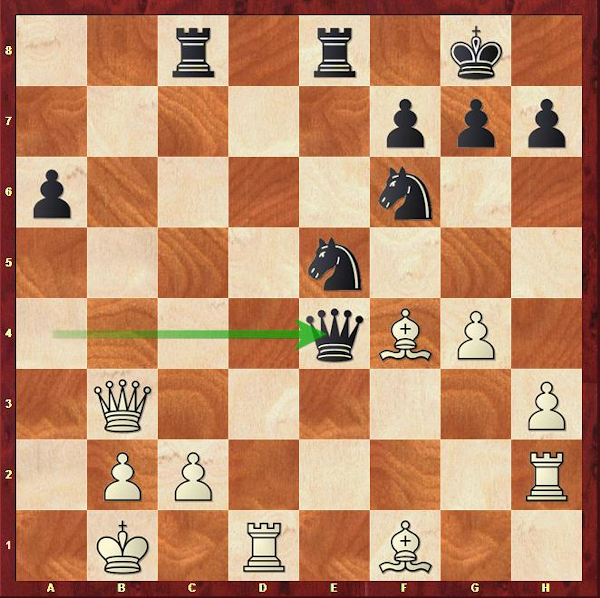
During the game, we didn’t realize that 27.Rf2 (instead of 27.Bxe5?) was strong. After 27…Nc4, I look like I have threats and it doesn’t feel like it’s so nice to play for white. But in reality, after 28.g5 Nh5 (28…Nd5? 29.Bd3 +-) 29.Bc1! the nuisance potential of the Bishop pair should be a problem for black.
The game continued with 27…Qxe5 28.Re2 Ne4 29.Qd5 Qf4. I thought before playing 29…Qf4 and so my opponent had time to see that after the natural 30.Rde1? Nc3+! 31.bxc3 Rb8+ 32.Ka1 Rxe2 33.Bxe2 Qg3 34.Qd2 Qc7! 35.Bc4 (forced) 35…Qxc4 36.Qd4 Qc6, he would have been on the wrong side of the draw! Unfortunately, he preferred the solid 30.Ka1 and there was not much left to do.
Congratulations to Firouzja and Caruana, who won their ticket to the Candidates. As for me, I will have to get one of the two remaining places at the FIDE Grand Prix tournaments which will take place in February-March 2022.
Note that the Grand Swiss in Riga ended with a blitz tournament in memory of Tal in his hometown. In spite of my status of favorite as top seed in blitz, I had to be satisfied with a modest 13th place…
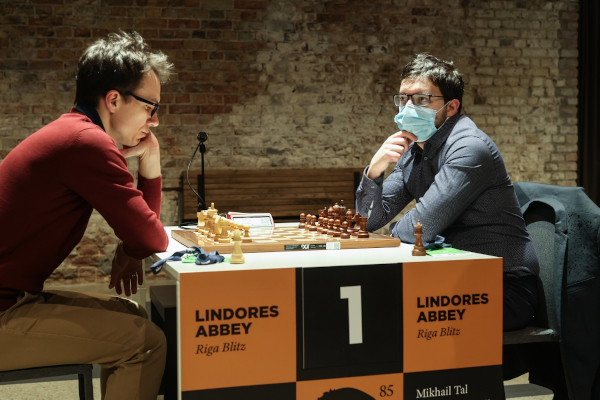
European Team Championship
It was a pleasure to be back in the French team, with a new-look line-up. In addition to Alireza Firouzja and the evergreen Etienne Bacrot, I was teamed up with two players I know very well, Maxime Lagarde and Jules Moussard, although this was my first time with them in the national team. Even though Maxime had already been selected in 2019, he and Jules were in a new situation, in a team destined to play the first roles. This may explain some of the poor decisions they made at the start of the tournament. In their defence, it is never easy to get into this new role.
The atmosphere within the team was good, everything went really well. We were permanently followed by a cameraman. He filmed us discreetly, and every day the French Federation would broadcast a video on the life of the group: http://echecs.asso.fr/Actu.aspx?Ref=13656
Alireza and I were both ready to play first or second board, no matter which order. Our captain, Sébastien Mazé, finally decided that Alireza would play on board 1. Alireza and I finally played all nine rounds.
Round 1: Austria-France 1-3
A quiet debut, where I won my white game against Dragnev (2548), and a match victory without too much trepidation.
Round 2: France-Croatia 2.5-1.5
A match against a dangerous team. My black game against Brkic (2599) followed a huge theoretical Najdorf line, where I made the questionable decision to give away the d6-pawn, which was not necessary. Fortunately, after much thought, my opponent decided to avoid any complications and return the d-pawn to ensure a draw.
Thanks to Etienne Bacrot’s victory, the team won its second match, making a good start to the tournament.
Round 3: Hungary-France 2.5-1.5
That’s where the problems started… Alireza did the job on the first board by beating Erdos after a very nice game. But on boards 3 and 4, there were some turnarounds: when I signed the draw because I had nothing left with white against Berkes (2676), the team was not in danger: Alireza and Maxime were pressing a bit, Etienne looked to have the draw in hand.
The situation turned around in ten minutes while I was on my way back to the hotel. When I saw the faces of Sébastien Mazé and Jules Moussard and quickly looked at the positions, I understood…
Concerning my game, I missed some luck. 17.c4 seems to give me a good advantage because after 17…Nc6 immediately, there is 18.Nd5!.
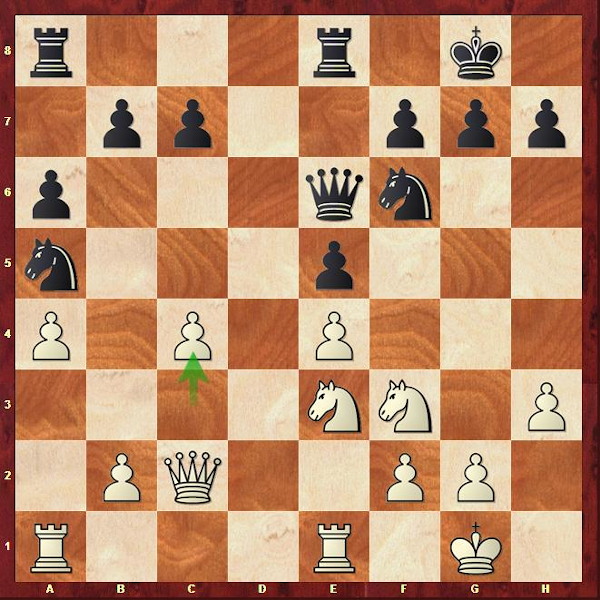
Berkes opted for 17…c5, with the idea that if black’s Knight gets to d4, it’s a draw right away. I could have played the Nh4-f5 manoeuvre, but it seemed a bit light, and I wanted to get a sharper position. After 18.Rad1, Black had to come up with a few more odd moves, including 18…h6 19.Nd5 Rac8 but everything seemed to fit. I continued with 20.Nxf6+ Qxf6 21.Rd7 and I had in mind the position that occurred after 21…b6 22.Red1 Nc6 23.R1d6 Re6 24.Qd3 (24.Rd5 doesn’t bring much) 24…Nd4 25.Rxe6 Qxe6 26.Rd5.If 26…f6, I had considered 27.Nh4 followed by Nf5 which could be strong, but after 26…Re8!,I had no other choice than 27.Nxe5 f6 28.Ng4 Qxe4 29.Qxe4 Rxe4 30.Ne3. Of course, I remained a little bit better, but it’s actually quite easy to hold. After a series of precise moves, my opponent managed to earn the half point.
This first team loss was obviously a big disappointment.
Round 4 : France-Turkey 2.5-1.5
We had to get back immediately, and we di dit by winning on the first two boards. Unfortunately, Etienne lost from a very good position.
As for my game, I took advantage of the fact that my opponent (Dastan, 2572) had not played for a year and a half. I think he must be a student and not a professional player. It showed because he took a lot of time to make his decisions. He was playing good moves, and then he started to take risks by grabbing a pawn on the Queenside without logically following it up with castling Queenside. In his defense, he had only 2 minutes left at that time!
Round 5: Armenia-France 2.5-1.5
Unfortunately, Maxime and Jules lost their footing on the last two boards, although their positions were ok. The difficulties started for me with this white game against Martyrosian (2624).
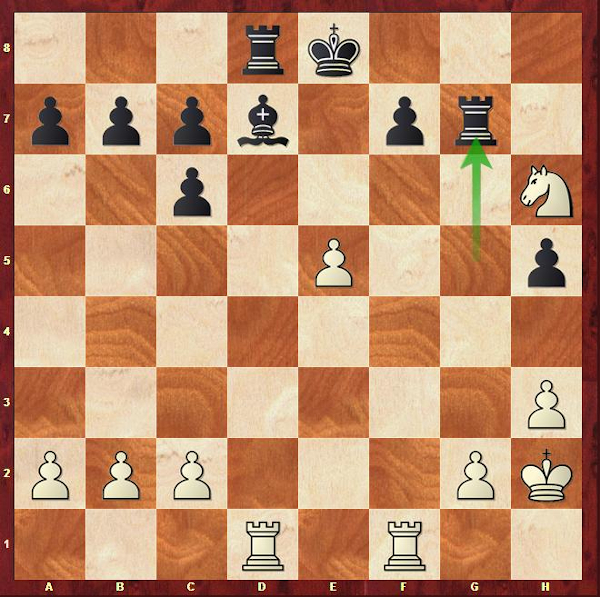
n the final position, I repeated moves because I had not seen the strength of 26.h4!. After 26…Be6 27.Rxd8+ Kxd8, simply 28.a3. Black doesn’t have 28…Ke7 because of 29.Nf5+ Bxf5 30.Rxf5 which promises a nightmarish Rook endgame. And above all, black doesn’t have 28…Rg6 29.Nxf7+ Ke7 either since there is 30.Ng5 available now. And after a neutral move, e.g. 28…b6, the plan would have been 29.Rf4 (but not 29.Nf5? right away because of 29…Rg4) followed by 30.Nf5, with a tangible advantage.
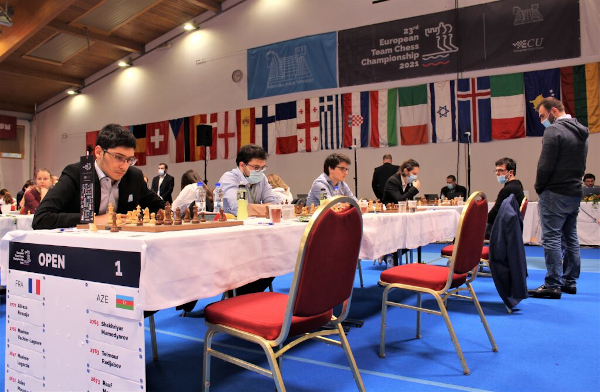
Round 6: France-Greece 3-1
A match that came after the rest day, when we already had two defeats on our record. Clearly, we were now in all-in mode 🙂 .
White brought the two points of the victory. On my side, I managed to get some small chances with black against Banikas (2592), which I unfortunately wasted with an inaccurate move at the end.
Round 7: France-Georgia 2.5-1.5
We knew it would be a complicated and tricky encounter against largely underrated players. As often, the match was won on the first board by Alireza 🙂 . The others made three draws without too much relief, of which mine with black against Sanikidze (2458).
Round 8: Russia-France 1.5-2.5
A decisive match and a prestige victory, brought by Maxime Lagarde. He had been assigned to play solidly with white against Esipenko, but he finally got a little something and created problems that his opponent did not solve in reciprocal zeitnot. Etienne and Alireza, who were flanking me, were both under pressure with black, and my glances to the right and left were not exactly reassuring. For my part, I had gotten a slight pressure typical of the Italian against Dubov (2714), though it probably wasn’t much in the end. I still continued the game in case things didn’t go well for Maxime. And when he finally won, I immediately offered a draw. But it’s true that it was quite intense mentally to follow the other games carefully while playing his own.
Round 9: France-Azerbaijan 2.5-1.5
Against Azerbaijan, it was again Alireza who was decisive, overcoming Mamedyarov who first did too much to avoid a draw, then managed to get out of a very dangerous position to transpose in a Rook endgame that I was sure would be a draw. At that moment, I was quietly in my room resting, and I saw that …Rf3 was the only move to draw. So I went down the hall to force Mamed into error 🙂 . And it worked!
On my board, I had long since drawn my black game against Radjabov (2763) with ease. I should even have continued in the final position, in which I was probably already slightly better.
A wonderful final victory to conclude the tournament, even if we missed the gold for a few points of a rather improbable tie-breaking system. We will be satisfied with this nice silver medal behind Ukraine.
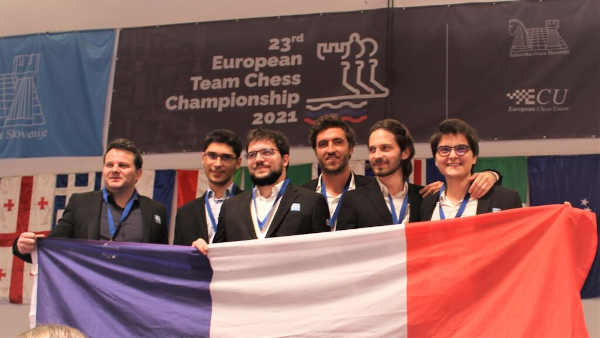
In the end, the French team showed that it was hyper competitive on the international level, obviously boosted by the arrival of Alireza. We have to congratulate him for his major contribution to our result, and for his new #2 spot in the World rankings that he occupies after a fearful run of results the last couple of months.
On my side, I lacked a little bit of energy, and if I could have put more intensity, I could have caused more problems to my opponents, especially in the second half of the tournament. My performance was still very solid, and I am now on a 29-game unbeaten streak.
Next up for me is the Rapid & Blitz World Championship, which is back on after a cancelled 2020 edition because of Covid. As usual, it will take place between Christmas and New Year’s Day, this time in Nursultan, the capital of distant Kazhakstan.
Maxime’s games in bundesliga:
Maxime’s games in Riga:
Maxime’s games in blitz:
Maxime’s games in the European team Championship:
Maxime often answers in interviews that he likes and follows many sports, but that it is probably tennis that holds the number one place for him. Before heading to Berlin for the Bundesliga, it was therefore with pleasure that he went to La Roche-sur-Yon on October 8, at the invitation of the organizers of the Open de Vendée de Tennis / ATP Challenger. On this occasion, Maxime was able to spend some time with the future winner of the event, the Czech Jiri Vesely. A time of sharing which also saw them exchange a few balls on the court, then play a couple of chess games in front of the cameras. Here is a quick interview with the two players:
